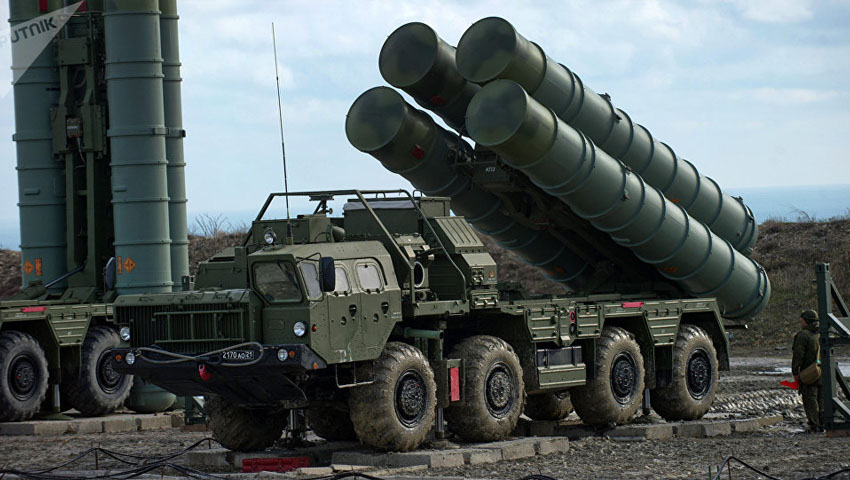The first delivery of a Russian S-400 air and missile defence system to NATO ally Turkey – combined with the increasing proliferation of advanced Russian and Chinese weapons systems – is serving as the basis for a declining technological advantage for both Australia and its major allies, including the US, UK and Japan.
To continue reading the rest of this article, please log in.
Create free account to get unlimited news articles and more!
Since the end of the Second World War, military technology has constantly been a game of cat and mouse between the super and great powers – with a range of technology areas serving as the basis of the competition and the primary fuel for proxy wars of influence building and geo-political competition around the world, the 21st century is no different.
For many Western nations, including Australia the US and to a lesser extent, the UK, France and at the time West Germany emerged as the primary source of cutting-edge military technology as each of those nations played a critical role in maintaining the post-war economic, political and strategic order – mainly through integration in complex alliance frameworks like NATO.
In today's world, the resurgence of Putin's Russia and the increasing assertiveness of China are serving as not only direct challenges to the post-Second World War alliance system, but also to the qualitative technological edge the US and other Western allies have typically ensured – the growing proliferation of advanced, cost-effective platforms including advanced air and missile defence systems, advanced submarines, advanced 4.5 and fifth-generation fighter aircraft and ballistic and cruise missiles all serve as potent examples of the new arms race.
Seeking out the best value for money
This has become increasingly troubling with recent events, namely the Turkish acquisition of the advanced, Russian-designed and manufactured S-400 integrated air and missile defence system despite the US threatening to withdraw access to the fifth-generation F-35 Joint Strike Fighter for an increasingly recalcitrant Turkish administration with its own growing economic, political and strategic ambitions in the Middle East.
For Turkey, the threats made by the US seemingly fell on deaf ears, with the nation rubbing salt in the wound and using the recent Paris Airshow to reveal its own development of a fifth-generation fighter aircraft – incorporating technological and manufacturing lessons learned through the country's participation in the global F-35 supply chain.
One would be forgiven for asking, why is this an issue? Clearly Turkey is pursuing value for money in an era of increasingly costly defence acquisition programs, however Turkey is one of the earliest members of NATO – an organisation designed and created to counter the threat of Soviet aggression towards Europe in the post-Second World War period.
While there is a number of issues behind the recalcitrance of the Turkish administration and its refusal to bow to US pressure – the clearest driving force is the conditional nature of access for some nations and cost of US and more broadly Western weapons systems for emerging powers. Answering the demand are nations like Russia and China, both of which are less conditional in their sale of weapons systems and have frequently sought to minimise the qualitative gap between their systems and those of Western competitors.
This competitor focus on easy access, combined with the cost-benefit analysis of the increasingly capable weapons systems, challenges the qualitative edge of technologies operated by great powers like the US and UK, and allies like Australia, causing a major rethink for many nations, including Australia.
Your thoughts
The seeming consequence-free nature of Turkey's acquisition of advanced Russian-designed and manufactured weapons systems could serve to embolden traditional Western allies to pursue access to Russian or Chinese weapons systems as a result of their increasing quality and cost-effective nature of these platforms.
For Australia, a nation defined by its relationship with traditionally larger, yet economically weaker regional neighbours, the growing economic prosperity of the region and corresponding arms build up, combined with ancient and more recent enmities, competing geo-political, economic and strategic interests, places the nation at the centre of the 21st century's 'great game'.
Australia’s security and prosperity are directly influenced by the stability and prosperity of the Indo-Pacific, meaning Australia must be directly engaged as both a benefactor and leader in all matters related to strategic, economic and political security, serving as either a replacement or complementary force to the role played by the US – should the US commitment or capacity be limited.
Get involved with the discussion and let us know your thoughts on Australia's future role and position in the broader US alliance structure and the Indo-Pacific more broadly in the comments section below, or get in touch with
Stephen Kuper
Steve has an extensive career across government, defence industry and advocacy, having previously worked for cabinet ministers at both Federal and State levels.

 Login
Login








